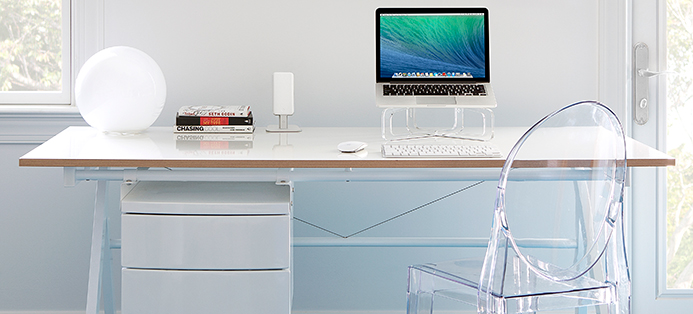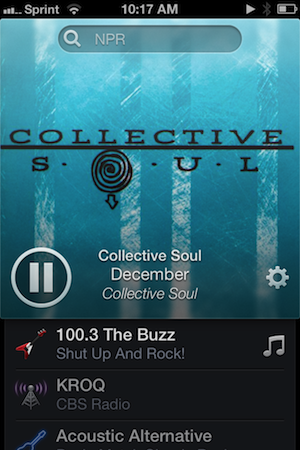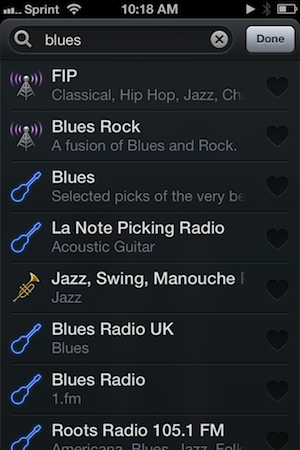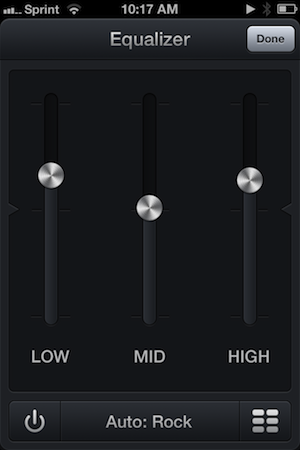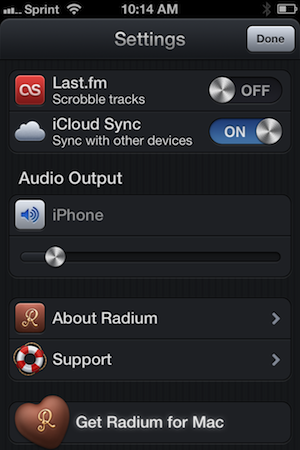Linus Edwards of VintageZen takes a look at the color palette Apple has used throughout their history in a variety of products, from the original Macintosh to the translucent plastics in iMacs and iBooks to colorful iPods. Compare that history to today’s flagship products, which are aluminum and framed by black or white glass. The conversation comes in light of an impending update to the iPhone 5, which is rumored to be launching with graphite and champagne as additional colors options at the high-end. Perhaps these classy colors are intended to be throwbacks to the gray Powerbooks and beige Macs of the 90s.
Apple’s New iPhone Trade-In Program Launches Nationwide
Apple’s new iPhone trade-in program is now being offered at Apple Retail Stores across the United States, details of which have been doled out to a number of news organizations. The trade-in program, a part of the iPhone Reuse and Recycling Program, lets customers receive a credit towards the purchase of a new iPhone by bringing in a working iPhone that’s currently under contract. Apple has provided the following statement to various news outlets:
iPhones hold great value. So, Apple Retail Stores are launching a new program to assist customers who wish to bring in their previous-generation iPhone for reuse or recycling. In addition to helping support the environment, customers will be able to receive a credit for their returned phone that they can use toward the purchase of a new iPhone.
Joanna Stern from ABC News explains.
Apple store employees will assess the condition of the phone and determine the value of the phone. According to sources, a 16GB iPhone 5 in good condition would be valued at close to $300. It is unclear if phones with more storage would be worth more …
If you are not currently on a contract or if your contract is up, customers will have to sign up for another cellular contract to take advantage of the program.
As Darrell Etherington of TechCrunch reports, the new trade-in program specifically applies to iPhones at retail stores.
Apple’s intentions for building its own in-store trade-in program were originally outed back in June, when it was revealed that it would partner with Brightstar Corp., a distributor of mobile devices, in order to offer the deal to users. Apple has previously offered up iPhone trade-ins via PowerOn thanks to its “Apple Recycling Program,” but this is in retail stores instead of only working via mail, and specific to iPhones, rather than covering a range of Apple hardware.
According to Mark Gurman of 9to5Mac, the program won’t be widely advertised to consumers.
The trade-in process can be conducted on the store floor, or at the Genius Bar. Apple will not be heavily promoting the program with marketing signage (as of now), but Apple Store employees have been instructed to recommend the program to applicable customers.
Update: Roberto Baldwin of Wired clarifies that the trade-in value you receive must be applied to a newer iPhone that the Apple Retail Store has in stock. This is correct. The iPhone trade-in program that’s launching today is different from Apple’s traditional online recycling programs. (I added this since the Wired article has everything in one place.)
It’s been reported elsewhere that Apple will issue credits or gift cards for new phones. That’s incorrect. If the iPhone you want is out of stock or unavailable, you will not be able to trade-in your old iPhone. The whole process has to happen at the same time. You go in with a phone and walk out with a phone. The employee will offer to set up the new iPhone with you at the store. Or you have the option of taking it home and setting it up there.
You can alternatively receive an Apple Store Gift Card for your iPhone or other electronic device by going through the Reuse and Recycling Program online, which works similarly to trade-in services such as Gazelle.
[via ABC News, TechCrunch, 9to5Mac, and Wired]
Blind, A 1X Web Browser for Retina Displays→
For web developers building websites on the latest MacBook Pros, Blind lets you see what your site looks like on a 1x display. Using it is as easy as clicking on a bookmarklet. It’s $2.99 in the Mac App Store.
Twelve South Introduces the GhostStand, A Clear Elevated Stand for Your MacBook→
Twelve South has been busy this year. Their latest new product, following HiRise, is a brand new laptop stand made out of lucite. From the product page:
GhostStand is a transparent, ultra-modern platform– and a brilliant work of art– that elevates MacBook to a more comfortable viewing height. Pair your MacBook with a full-size keyboard and mouse, then set it on GhostStand to enjoy desktop style comfort at home or work. While GhostStand makes it look like your MacBook is floating in midair, two sets of soft silicone rails keep your Mac safely grounded to this affordable lucite stand.
It’s also $34.99, and can alternatively be purchased from the Apple Store online. It would pair well with a lot of Mac accessories, including those famous Harman Kardon SoundSticks. I was under the impression that the interlocking pieces of glass could be separated, making the stand portable, but that doesn’t seem to be the case. This is very much a stationary piece for your desk, designed to look beautiful and give the appearance that your Mac is floating on air.
Apple TV Gets Vevo, Disney Channel, and The Weather Channel in Latest Update→
Eric Slivka from MacRumors writes:
Apple today added several new apps to the Apple TV, including the previously reported Vevo music video channel. Other new additions include a dedicated app for The Weather Channel, an app for the Smithsonian Channel, as well as two Disney television apps: Disney Channel and Disney XD.
Vevo’s library of 75,000 HD music video should keep the kids busy for a while.
Have a Chromecast? There’s Now an iOS App For That→
It’s little more than a configuration utility, but Chromecast for iOS (App Store link) lets you set up your newly acquired dongle so that you can connect it to your Wi-Fi network and change your device name and password.
Radium for iOS: Internet Radio and Sirius XM in Your Pocket
Perhaps uniquely to me, radio is a social gathering, since the radio and not the television is the thing my family and I always convene around instead of the television. We’ll listen to terrible singles and complain through them, and we’ll joke about how every artist feels like they have to fill in dead air by shouting a repetitive string of “yeahs” or “oohs” or other provocative exclamations. Then the next night there’ll be a string of great songs, and maybe it’ll get a little quieter at the table as we listen in.
As a consequence I’m used to radio becoming the thing I have on in the background. You get to know all the songs, the loops they run on, the voices of the DJs and reporters, and it just becomes this sort of comforting noise machine. Why go to Starbucks and soak in the ambient noise[1] when you can turn on the radio?
Sometime in college, I happened across Radium, and I had this instantaneous attraction to it. Imagine my excitement when I discovered I could actually bring that comforting noise machine to my desktop! At the time it didn’t play what was locally airing over FM, but it did bring Internet radio to the desktop through a simple search bar and drop down menu. What made it stick for me was that instead of browsing by station, Radium let you browse by what you were into. It surfaced relevant stations that fit any number of queries from “90’s acoustic” or “covers.” And you’d actually find stations that fit those descriptions.
By the time I got an iPhone, I figured Radium would have made it onto iOS with a big shiny yellow icon, matching the style that pervaded it on the desktop. Not yet.
That was a couple years ago. Today, Radium has arrived on iOS, not with the classic radio I imagined it would be identified by, but by a chocolate drop that’s become Radium’s unusual characteristic since the launch of their updated Mac app earlier this year.
One might wonder how a menu bar app dependent on search would translate to the iPhone, yet CatPig Studios have pulled it off, drawing your attention to all the right places and making what should feel like a sparse list of radio stations feel like a traditional music player, alive and full of personality. It becomes immediately obvious that you should play something, with instructions limited to a lack of artwork and example queries that flash in the search bar. As you begin to search, cover art falls away, and the app searches and updates stations in realtime as you enter your query.
What you can listen to is virtually unlimited as far as Internet radio goes. Radium claims to support over 8,000 stations, which includes NPR and BBC radio. It supports ClearChannel stations, meaning that I can conveniently listen to a local radio stream without having to go through a Flash player on the web or download the iHeartRadio[2] app. If you’re a Sirius XM listener, you can plug in your account info and stream satellite radio straight to your iPhone over an Internet connection. The app also supports other providers such as CalmRadio for classical music and Digitally Imported for electronic music. It’s absolutely convenient and a hallmark of what made Radium such a great app on the Mac.
All of the great features that are found in the Mac app can also be found in the iOS app. Tapping on album artwork, provided there’s song data, lets you add the song to a wish list or view it on iTunes to purchase. There’s also a sharing button for copying track data or the station link so others can listen-in. And if you have a Last.fm account, you can plug in your account so you can scrobble and love tracks as you play them. The equalizer is also present, automatically choosing a preset based on what’s currently playing, which you can turn on or off by pressing the inconspicuous power button. Each station is accompanied by a glyph describing what kind of music it plays, and you can change that by tapping on the icon in your list.
Swiping on stations lets you love it so you can quickly find it later. If iCloud sync is turned on, those stations are also shared with Radium on the Mac so you can quickly tune-in from your desktop later.
The big difference between the iOS and Mac apps is that the iOS app is even more delicious.
There’s something gratifying about tugging at the artwork, pulling it down towards the bottom of the display and watching it snap back into place. On cue, the pause button quietly reappears with artist and track info, unwilling to wait for the animation to complete its preprogrammed bounces. Then you’ll flick the other direction and watch the artwork similarly bounce into place above the station listing, the pause button becoming the deciding anchor for the height of the now playing information at the top of the display. It’s possibly rubber band scrolling at its finest and it’s a detail only an app on the iPhone could pull off.
With iOS 7 on the horizon, one might wonder whether Radium is relevant given iTunes Radio, and the possible but unconfirmed inclusion of traditional Internet radio stations currently found in iTunes’ directory. My gut feeling says that Radium and iTunes aren’t competing on the same turf, with Radium’s obvious advantage being the Sirius XM and the ability to play back radio stations traditionally locked to particular content providers or apps. CatPig Studios are in the business of letting you tune-in to the rest of the world, while iTunes and others are in the business of generating personalized playlists labeled as radio.
Radium has been one of the apps I’ve always thought would be a good fit for the iPhone, and it’s finally here. It’s the same Radium you know and love, adapted to iOS and imbued with charming details that make themselves evident as you scroll, flick, and swipe across the interface. It’s Internet radio in your pocket, and it’s impressively inexpensive, regularly costing only $3.99 on the App Store. Until September 3rd, however, you can pick up the app for only $1.99 as part of an introductory promotion.
Simplenote is Relaunching With Improved Syncing for Mac, iOS 7, and Android→
From the guys who make sharing notes between iOS, Android, and your desktop computer simple:
We’ve been beta testing new versions of Simplenote for Mac, Android, and iOS 7. They look a lot different: cleaner, simpler, and more lightweight. Our approach was to return to first principles and build anew.
A side effect is that some less frequently used features won’t be available, at least at first. Some people will cheer. Others, like those who adore sorting notes by reverse chronological creation date, may mourn. More details are coming soon.
Also of note are improvements to Simperium, which should make syncing between your devices faster and more seamless.
The Problems Facing App.net→
Mat Honan of Wired writes about App.net and the problems it faces in getting both people and developers interested in its service. The article is great since it puts in laymen’s terms exactly what it is and what it provides, something that’s needed after being confused as an alternative to Twitter for so long.
In simple terms, App.net is a tool that affords you control of your data and network. It lets developers write apps and tap into users’ existing social graphs and stored files. Its first app was a Twitter-esque status updating service. But over the past year, it’s been quietly transforming itself, and with its free tiers and passport service, it may finally be ready to change the world — but first it has a lot to overcome, not the least of which are the many misconceptions about what the hell it is exactly.


